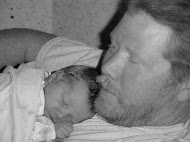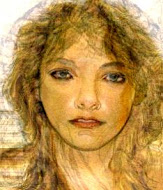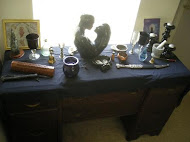Frith: A Scottish Augury
by Jon Keeyes; (the link I had is dead…)
Since ancient times, the people of the Celtic culture have sought to know the portents of the future. Mythological and classical literature make reference to many forms of divination, but there is one that is often overlooked. In Scotland, there exists an augury called frith which was still in widespread practice even through the last half of the nineteenth century when Alexander Carmichael scoured the lands seeking the lore for his Carmina Gadelica. Most scholars will agree that Carmichael is responsible for the lasting knowledge of frith as nearly every source on the subject uses Carmichael as reference concerning the augury.
As related in the Carmina Gadelica, frith is translated as meaning augury although divination is perhaps better. Frith is a means of divining the future which allows the fritheir, or augerer, to see the unseen. A belief was held by some in Scotland that the gift of fritheireachd was inherited through the family line. Sometimes the ability appeared in one member of the family, and at other times disappeared, only to reappear in the next generation. Those who are born into a line that has held notable seers are called Clann an Fritheir which means children of the seer. Through evidence, which shall be discussed later, it appears that there were two types of frithier. One being a person who used the second sight as a tool of their frith, and others who simply interpreted the portents of what they saw in the world around them. In either case, frith became a valued gift used at special times.
The people of Scotland held to their old pagan beliefs that there were times of the year when it was proper to seek vision of what the future held. For some, such omens were important in aiding the sick, for others it gave insight into the welfare of the family and home, while for others it gave them guidance in future courses of action. Noragh Jones writes,
"It was fitting to assess whether the tides of fortune in every sphere of life were flowing in favor or dragging against."
Ms. Jones later continues with,
"Augury or the seeing of the unseen was primarily a means of working out the right times for actions and schemes (and for inaction equally) in the affairs of all God's creatures."
The art of frith was only practiced at certain times of the year or under very special circumstances. The Scottish held the belief that frith could only be performed at sunrise on the first Monday following a fire festival, called Quarter Days, or when a person or valuable object was missing. It is not surprising that the frith is associated with the Quarter Days. Such times of sacredness marked shifts in livelihoods as the stages of the year shifted through seasons. Its timing of Mondays is related to the Christian importance of the Sunday Sabbath, but in older times was, in all likelihood, done the sunrise of the Quarter Day itself. The necessity of the frith being performed at sunrise also holds importance to the Celtic belief of "in between places" and "in between times". As the sun rises, the world is "in between" night and day, sunlight and darkness, order and chaos; a time when the border between the physical world and the Otherworld is broken. Sunrise auguries were favored for it allowed the fritheir to see into the Otherworld and receive its messages. The importance of "in betweens" is furthered by the need for the frith to be performed in a door way, "in between" the inside and the outside world.
Frith, and its profound accuracy, can be found throughout folktales in abundance. Stories about the auguries made for finding missing persons or objects are still told with a pride that speaks of the achievements of the Scottish seers and augurers. Carmichael makes claim that frith originated through Celtic Christian lore for it was said that frith was created by Saint Brigid. Says Anne Ross,
"One Gaelic legend has it that when Christ was missing, Mary found out that he was in the temple by means of augury."
As the tale relates, Brigid discovered, through her frith, that Jesus was in a temple arguing with the rabbis. When Mary and Joseph journeyed to the temple, they found Jesus just as Brigid had seen. The tale continues at a later time when Jesus comes about missing once more. Mary had Brigid perform another frith of which Brigid saw Jesus sitting on the rim of a well teaching his disciples. And, when Mary and Joseph went looking, he was discovered just as Brigid had told. These tales have remained alive in Scottish folklore through prayers and poetry. One augury prayer honoring Brigid goes like this:
The augury Brigid made for her Foster-son,
She made a pipe within her palms;
TìI see the Foster-son by the well’s side,
Teaching the people assuredly.
I set the augury towards the well,
And truly that righteous work,
The King of kings teaching the people,
Yonder see I Christ assuredly.
As Christianity and Paganism in Scotland have become as intertwined as Celtic knotwork, it is impossible to determine the true origins of frith. However, in various collections of folklore, many highlanders hold firm to the belief that frith originated with the second sight long before St. Columba had brought Christianity to their land.
Though Brigid is considered the first fritheir she is by far not the only fritheir for folklore abounds with such feats of seeing the unseen. Among Carmichael’s collection he relates the story of a man who had journeyed to Australia seeking his fortune. When his family had not heard from him in three years, the wife went to a fritheir. The fritheir saw the husband safe but poor and said that he would now write of his plight. Within three months the family received his letter. Another tale speaks of four men from Lewis who had been lost at see amidst a storm. Friends had searched unsuccessfully for them and found no signs of the ships wreckage. Through the augury of Duncan MacInnes, it was told that the men were in St. Kilda and would return in March when the bitter winter had receded. As foretold, come March the men arrived home safely.
There is an interesting element which appears in these tales. Such evidence relates that fritheirs maintained a belief in the importance of omens when performing their auguries. Yet, these fritheir simply went into a trance and, upon their return to the waking world, related the events. It appears that the art of frith, for finding lost people and objects, is closely entangled with the second sight for in most of these accounts omens were not utilized. From these tales, it can be determined that there are two forms of frith; one which employs the second sight, and a second which is determined by a persons ability to interpret omens.
It is this second form of frith that the majority of specifics can be discovered. The Quarter Day frith was performed across Scotland, the method used being almost universal. Says Noragh Jones,
"The formal rules urged that divination should be done on the first Monday of the quarter, bare-footed and bareheaded, before or at sunrise, while fasting".
The fritheir begins by circling the hearth in the center of the home three times in a sunwise direction. As the fritheir circles the flame they are to recite the Hymn of the Frith (which can easily be altered by replacing "God" with "the Gods" for those seeking a stronger pagan theme):
I am going without
To the doorstep of my house
In the name of God
Stronger of sight than all
I go out in the name of God,
I come in the name of the Son
I walking in the path, O God,
Thou O God, upon my doorstep
God before me, God behind me,
God over me, God beneath me,
God within me, God without me,
The God of marvels leading me.
Once the hymn is spoken, the fritheir proceeds to the door of their home with eyes shut or blindfolded. As the door is opened, the fritheir places one hand upon each jamb. Calling once more to the Gods for the ability to "see" the fritheir flings their eyes open and takes in the sight of all that lies before them. It is from this sight that the Quarter's future is foretold (see "Omens" at the end of this article). There are two additional methods that folklore includes depending upon the regions of Scotland. One addition relates that rather than simply standing in the doorway, the fritheir walks sunwise around the home with their gaze held firmly forward. They divine their omens based upon all that is seen in this walk. The second method reveals that the sight is taken in through the means of a "tube". The fritheir holds a stone with a hole in its center to their eye, or forms a tube out of their fingers, and looks through this. The augury of Brigid states that she used this tube to "see Christ" but it is unknown whether this second method derives from her story or vice versa. It is John and Caitlin Matthews opinion that these "seeing tubes" were "widespread in Irish Gaelic usage, where the palms are used to provide a seeing-space or tabula rasa, to block out the light or focus the seer."
Modern folk walking the Celtic path can use the Quarter Day frith as the tool of their fire festival divinations. For those living in the country, this method can remain unchanged as the omens are derived from country folk and their rural landscape. But those living in the city may need to discover new ways, and in some cases new omens, based upon their environment. Having lived in dense, urban areas, I have found several alternate forms which have functioned quite well. In one apartment I lived in, to look out the front door meant staring at a wall three feet away. But my back window looked out across a park. This window became my "door" for seeing the omens. Another alternate method is to actually leave the home and go to an outdoor "in-between" place. This is a location where two opposites meet each other. A popular "in-between" place to the Celtic people (also mentioned by Carmichael as an alternative) is where water meets a shore. This can be found at a nearby lake, stream, pond or the ocean. The fritheir can take a candle, walk three times deosil about it, then proceed to this "in-between" spot. In seeking new places, when city life prevents following the old ways, it is important to maintain the elements of the "in-between time" and the "in-between" place. It is in this otherworldly spot that the future is held in precious balance, allowing the fritheir to see into the unseen.
OMENS
"The signs are many and varied, and only some examples of them can be given. They are called rathadach and rosadach, lucky and unlucky, fortunate and mischievous"
The Carmina Gadelica
- It is a good sign if someone is walking towards you.
- It is a bad sign if someone is walking away from you.
- To see a man or animal rising means good health or a quick recovery from sickness.
- To see a man lying down mean sickness to come or a continuance of sickness.
- It was a good sign if a man is looking at the seer.
- A woman standing up is a good sign.
- A woman walking away means misfortune.
- To see a red haired woman is unlucky.
- To see a black haired woman is lucky.
- To see a brown haired woman is even luckier.
- A bird flying towards the seer means news is coming soon.
- To see a bird flying is a fairly good omen.
- To see a bird flying in a straight line from left to right is a very good sign.
- To see a totem animal is a very lucky sign.
- It means good luck if an animal was rising.
- It means bad luck if an animal is lying.
- If a trip is planned, to see a duck is good.
- If a trip is planned, to see a goat is bad.
- If a sea journey is planned, ducks flying is an especially good sign.
- If a land trip is planned, sheep rising is a good sign.
- To have three sparrows singing near the house is bad and can mean a death.
- If a rooster is crowing at dawn, things will be good.
- If a rooster crows before the light of dawn, sickness is coming.
- A cock coming towards, or looking at the seer, means excellent things to come.
- To see a rook approaching means harm is coming.
- An eagle or a hawk flying deosil means good things to come.
- To see a fox with pups is means fortune is coming soon.
- To see seven swans means peace and prosperity.
- To see a dog or a horse is a good sign.
- To see a black cat is a good sign especially if it crosses before you.
- To see a raven means a death is coming.
- A pig facing away is a bad sign for all except a Campbell.
Note: In divining based upon omens, new omens will need to be discovered for those people not in the country. Keep a record of what you see, listen within for their meanings, and pay attention to how the Quarter runs. Within a year, you will have created new sets of omens for your frith.
Bibliography:
Carmina Gadelica: Hymns and Incantations by Alexander Carmichael; Floris Books, Edinburgh, 1994 (link is to online book)
Power of Raven, Wisdom of Serpent by Noragh Jones; Floris Books, Edinburgh, 1994 (link to online book)
The Folklore of the Scottish Highlands by Anne Ross; Barnes & Noble Books, New York, 1993
The Silver Bough by F. Marion MacNeill; Edinburgh, 1982
The Encyclopedia of Celtic Wisdom by Caitlin & John Matthews; Barnes & Noble Books, New York, 1993
Celtic Heritage by Alwyn & Brinley Rees; Thames & Hudson, New York, 1994
Scottish Lore and Folklore compiled by Ronald Douglas; Bonanza Books, New York, 1982
Disclaimer: No one involved in this blog or its contents may be held responsible for any adverse reactions arising from following any of the instructions/recipes on this list. It is the reader's personal responsibility to exercise all precautions and use his or her own discretion if following any instructions or advice from this blog.















No comments:
Post a Comment